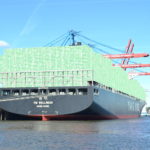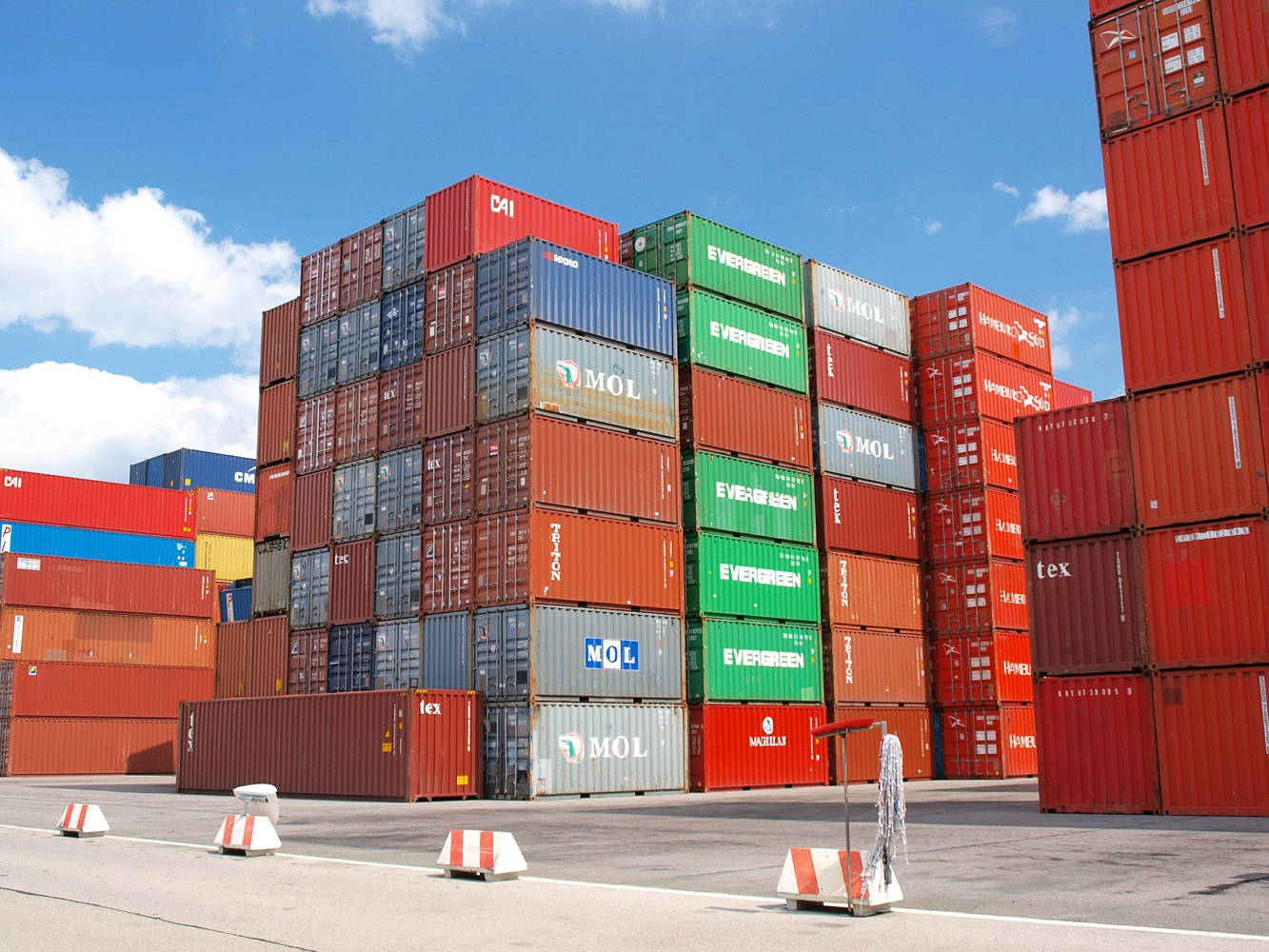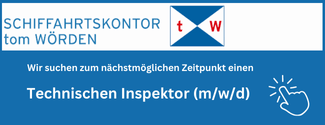The potential for automation and monitoring is huge – for example in the hotly debated topic of misdeclaration of hazardous goods or container tracking. But there is already a lack of uniform norms. Two current initiatives deal with telematics and blockchain
The Container Owners Association, the international organisation representing the interests of freight container owners, has recently published a guide, providing[ds_preview] an overview of the technology issues that they might face, and the choices that are available to them.
Talking to HANSA, COA-Secretary Patrick Hicks explains that the association focussed on the container equipment side decided to have a deeper look at the equipment management side a year or two ago: a working group on telematics and tracking was set up. However, especially smaller and midsize companies don’t have the same resources like the »big lines«. During first meetings of the working group, it became clear, that there is so much technology, »but we would really like to have a basic guide for the different types of technologies and what it all means, because we are not experts but on the other hand we need to know more about it.«
»Significant complexity«
Commencing with a glossary of many of the different industry terms and acronyms that are frequently used, the guidelines go on to provide a background of the way that the industry has developed over the past decade. »The evolution from ›wired‹ to ›wireless‹ has provided great opportunities – but adds significant complexity, because of the wide range of communication technologies available, how they are used around the world in different countries and communication issues with containers on vessels«, the COA emphasizes.
In addition, some of the issues for tracking dry freight containers are covered, including data flow, required communication frequency, battery life (and installation cost), power consumption, sensor technology requirements and compatibility with vessel partners. Issues for reefer container communication are also tackled – including landside transit, on-board vessels, global use, telematics technology.
The final section covers API – Application Programming Interface. The guidelines explain that this needs to be integrated and agreed across the industry to ensure data can be transmitted by any hardware provider and offer the same standardised information to data users – a project that the COA is working on.
»Given the wide variety of communication technologies that will need to be considered, operators of reefers will need to carefully consider the capabilities of products being offered by different telematics suppliers to see which systems best meet their needs both today and over the coming years. They should also consider what options conference and partner shipping lines are utilizing and whether alternative systems are also compatible. Finally, operators will also need to consider API issues between differing systems to ensure greater flexibility and lower costs of operation over the long term«, it is said.
Focus on refrigeration
Also, a group of people is involved on the refrigeration machinery side or the reefer telematics side, so with the information the refrigeration machinery are providing back to shipping lines, said it would be useful to have a communication standard, the different technologies could actually communicate in a standard way between lines. »So that everybody is talking the same language«, Hicks says, adding that clarity is needed about who is actually selling what.
A group has come together under the COA, saying they need to have a standard API (programming interface), a protocol. That’s one of the projects the COA is working on at the moment, to have a standard system for reefer telematics to communicate back to the shipping lines.
In principle, it is an option that this standard might be the base for some kind of international code by organizations like Bimco, IMO or ISO.
However, it is a common fact that these mills grind more slowly at this level in time. »So the people said lets better start with an organization like COA, which has the capability of putting together a group of people and managing it relatively quickly because some of these other organizations can take a little bit longer«, Hicks explains.
The actual guide is more on an informational level. The people working on reefer telematics for example, have to agree first on an agreement and a document called a UDM (data model), then they may take it to ISO. The starting point was to try and get the standard API communication protocol for reefer telematics.
Up to now, there was some feedback in a sense that no one said anything about this or that being wrong. But Hicks is sure, in the future, the parties involved will look at it again for an update: »I am sure, it could be improved, like any other publication. Maybe we can go a little bit more into detail or maybe we missed something, we will see.«
Regarding blockchain technology, currently nothing is done through COA at the moment, not least because the IT experts meet in other groups, whereas COA is more the container management people. However, in the end, it might be useful to combine forces to have the equipment and the operations side integrated. »There are aspects that COA has specialized knowledge in«, he says, knowing that other initiatives are as well interested in equipment tracking.
It was in June already, when the COA announced that its Telematics/Track Trace Work Group will take »the unprecedented step of providing an open standard (at the application layer level) to permit interoperability of telematics device data from the various solution providers in the maritime shipping sector.«
Open standard
The open standard, which will start with refrigerated containers, but then be expanded to cover all container types, is supposed to »pave the way for all container owners to have multiple choices of vendors and platforms for their container fleets when choosing telematics systems.« This shall reduce risk and provide a more competitive and innovative marketplace of solutions to be explored and deployed.
This open standard is planned to allow container owners to explore more complex IT, Artificial Intelligence and even Blockchain applications to bring desired efficiencies and cost savings to the members.
The first step of this open standard is at the application layer, but the COA Work Group has also drawn up a roadmap to be expanded right down to the device level in terms of specification. The open standard is scheduled to be published in October 2019.
Hicks sees the potential, that the reefer initiative may be expanded to equipment tracking and management. »I don’t know how fast someone like the UN works, but if there are certain aspects that the UN project is not covering, then the COA could do it. I will be most likely on things like standard equipment tracking.« But also on things like, again a very specialized area, container depots. Still, there are lots of different protocols of communication between shipping lines and leasing companies, the customers and the depots, e.g. the differences in how a damage on a container and the necessary work is coded. »What is needed is to standardize a lot of the communication between owners and depots. Because each of the lines are developing systems and changes are never easy«, Hicks thinks.
According to him, COA members are absolutely interested in this. However, »being interested in one thing and making things happen is slightly different.« At the moment, it is almost impossible to create one standard for container owners, depots and shipping lines. »But technology may change so that we can make some way of at least standardization of communication processes.« In the COA sphere, telematics play an important role. In other areas like for example e-booking, fuel management, dangerous goods informations etc. there may be others.
Blockchain against misdeclaration
Regarding the widely discussed topic of dangerous goods declaration, there was another initiative recently set up. Maritime Blockchain Labs (MBL), founded by blockchain technology and governance experts BLOC and the Lloyd’s Register Foundation (LRF), announced the establishment of a consortium to explore the use of blockchain in tackling the significant risks and challenges associated with the declaration and handling of dangerous goods.
The consortium will explore the use of digital tools for traceability of dangerous goods cargo, and immutable attestations and digital audit trails for due diligence with a view to generating more transparency and accountability in tracking dangerous goods; ultimately, reducing incidents. Also, the plan is to build and test a prototype to assess the potential for distributed ledger technology (DLT) to address the challenges faced by stakeholders throughout the supply chain. Funded by LRF and conducted in partnership with Rainmaking, the consortium includes Copenhagen Malmö Ports (CMP), Flexport, X-Press Feeders, SecureSystem, DSV, PSA, Port+, Agility and MTI.
For HANSA, Marc Johnson, Head of Labs and Chief Sustainability Officer of BLOC commented on the question of how blockchain can help alleviate cargo misdeclaration.
»With temperatures reaching in excess of 500 degrees centigrade inside containers on fire, extinguishing the blaze is both extremely difficult and dangerous, and the fire can easily spread to other containers and the ship as a whole. Last year gave us a stark reminder of the cost of such incidents when five crewmembers died in a fire on board Maersk Honam, on 6 March 2018, in a tragic incident that was also the largest general average loss in history, according to the International Union of Marine Insurance (IUMI).«
For Johnson, blockchain is in many ways an ideal fit for this type of issue as it provides a secure, immutable store of information that has many obvious advantages of the current paper-based systems that are so susceptible to loss and misdeclaration.
Focus on codes
Continuously tracking and monitoring the contents of seafaring containers is a supremely complex task that demands cooperation amongst stakeholders and a high level of data interoperability and information sharing. However, he adds, it’s not that simple to simply »add blockchain«, as many in the industry who have been following blockchain’s progress will have likely observed.
The initial findings of the consortium have revealed some crucial insights into the root causes of misdeclaration, gleaned from interviews and pooling knowledge and research. The starting point was to look at the implementation of the two current codes for handling dangerous goods – the International Maritime Dangerous Goods Code (IMDG Code), and the Code of Practice for Packing of Cargo Transport Units (CTU Code),
The partners found that the myriad of different cargo classifications outlined within the two codes continuously inhibits shippers’ efforts to properly declare dangerous cargos to seafaring carriers, »as some of the dangerous goods suffer from the sheer number of ways they can be described, and there currently is no industry consensus or ‘best-practice’ on how to alleviate this growing issue.«
According to Johnson and cased on the preliminary research that has been conducted, the primary reasons for the occurrence of this ongoing challenge include weak enforcement, documentation complexity, lack of transparency, low-or-lack of training, quality assurance measures, costs, and time pressures associated with maintaining operational efficiency leading to incorrect packaging or stowage and dangerous cargo bans.
»Based on our understanding of the challenges from the information we’ve accumulated, it’s our assumption that declaration errors occur because of (1) Lack of Base Knowledge, (2) Intentional Fraud, and (3) Genuine Data Errors. Much to our surprise, it is widely accepted that these three errors contribute to the frequency of misdeclarations according to the order presented above«, the expert says.
One hypothesis is that many of the challenges associated with the misdeclaration of dangerous goods are highly related to the scope of responsibility for any individual actor, and that the scope of responsibility is limited to the scope of their business partners.
»Along these lines, it’s our hypothesis that this limited scope of responsibility implies that information is managed by siloed data systems that hinder transparent and efficient exchanges of information, because they rarely interoperate with data systems managed by other stakeholders along the connected value chain. This lack of data interoperability is a primary driver for misaligned incentives that prompt the lack of knowledge, and encourages deliberate mis-declarations in an effort to maintain or increase operational efficiency among stakeholders«, Johnson emphasizes.
What’s next?
To alleviate these issues, the partners »strongly believe the solution rests in a modular integration platform« that allows stakeholders to create, connect, and manage data inputs, mapping systems, and process flows, that connects to a suite of purpose-built remote sensors and devices, to provide stakeholders with actionable in-transit information about the location, condition, and security of the goods being shipped.
For the consortium, it is also apparent that the proposed platform must maintain the ability to showcase the provenance of data, be able to interoperate with the digital infrastructure that already exists, and must allow stakeholders to better visualise the flow of information as it moves through the value chain.
Furthermore, it is recognized that a digital platform in and of itself will not fully alleviate all of the issues the industry currently faces when declaring or handling dangerous goods. »To alleviate the many issues associated with data inputs and the active monitoring of goods, we see great benefit in utilizing purpose-built remote sensors and devices, to provide stakeholders with actionable in-transit information about the location, condition, and security of the goods being shipped, and to securely communicate with the platform to safeguard against data inconsistencies, whether intentional or not.«
Johnson concludes: »It won’t be easy, but by combining these two systems, a modular integration platform for process tracing, and a set of purpose-built remote sensors that provide in-near-real time information, we are confident that we can create a solution that securely authenticates the provenance of data inputs, and transparently showcases the movement of goods throughout the value chain, thereby providing actionable insights about the goods being shipped and showcasing the efficiency gains possible. We believe that this combination of unique information gathering and processing solutions will equip and incentivize stakeholders to more accurately and appropriately declare the contents of their shipments, which will limit the occurrence of the mis-declarations of dangerous goods.«

















